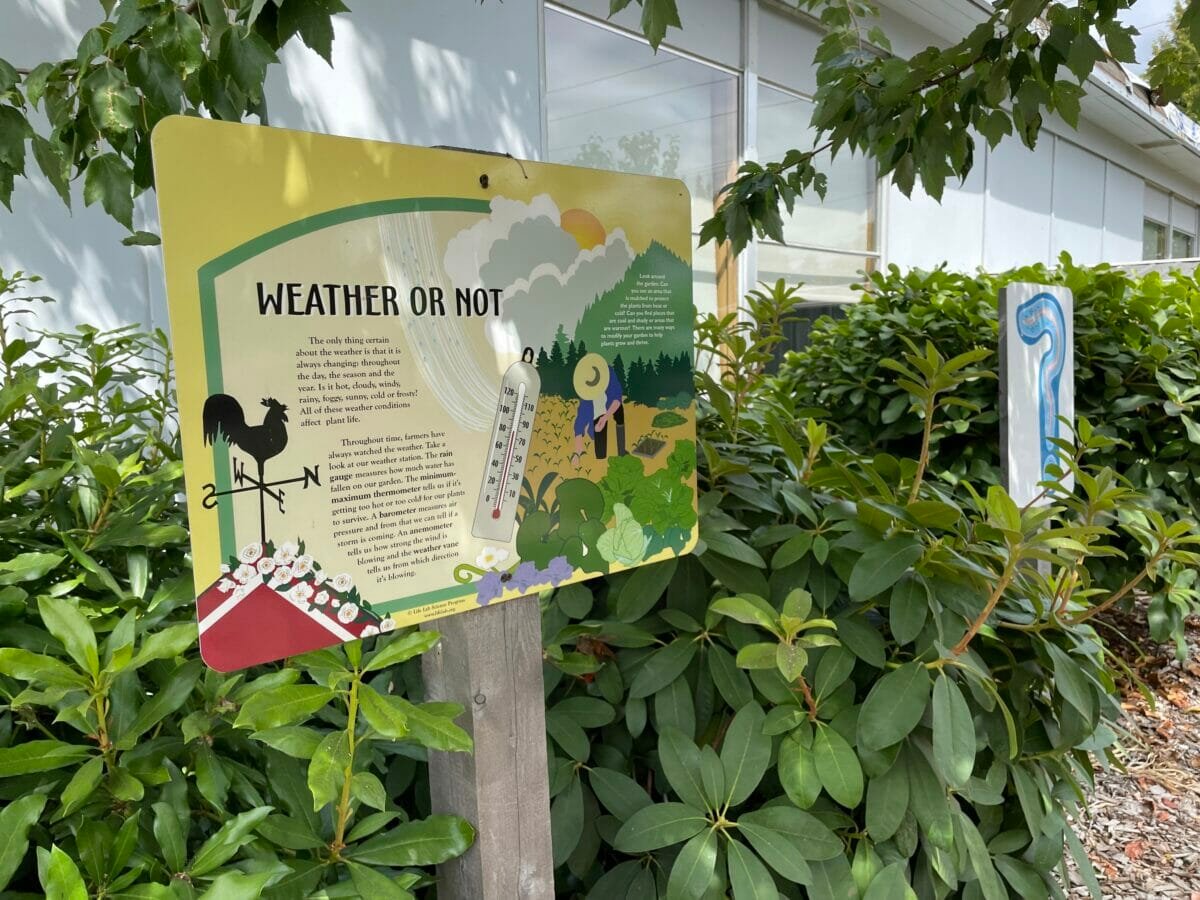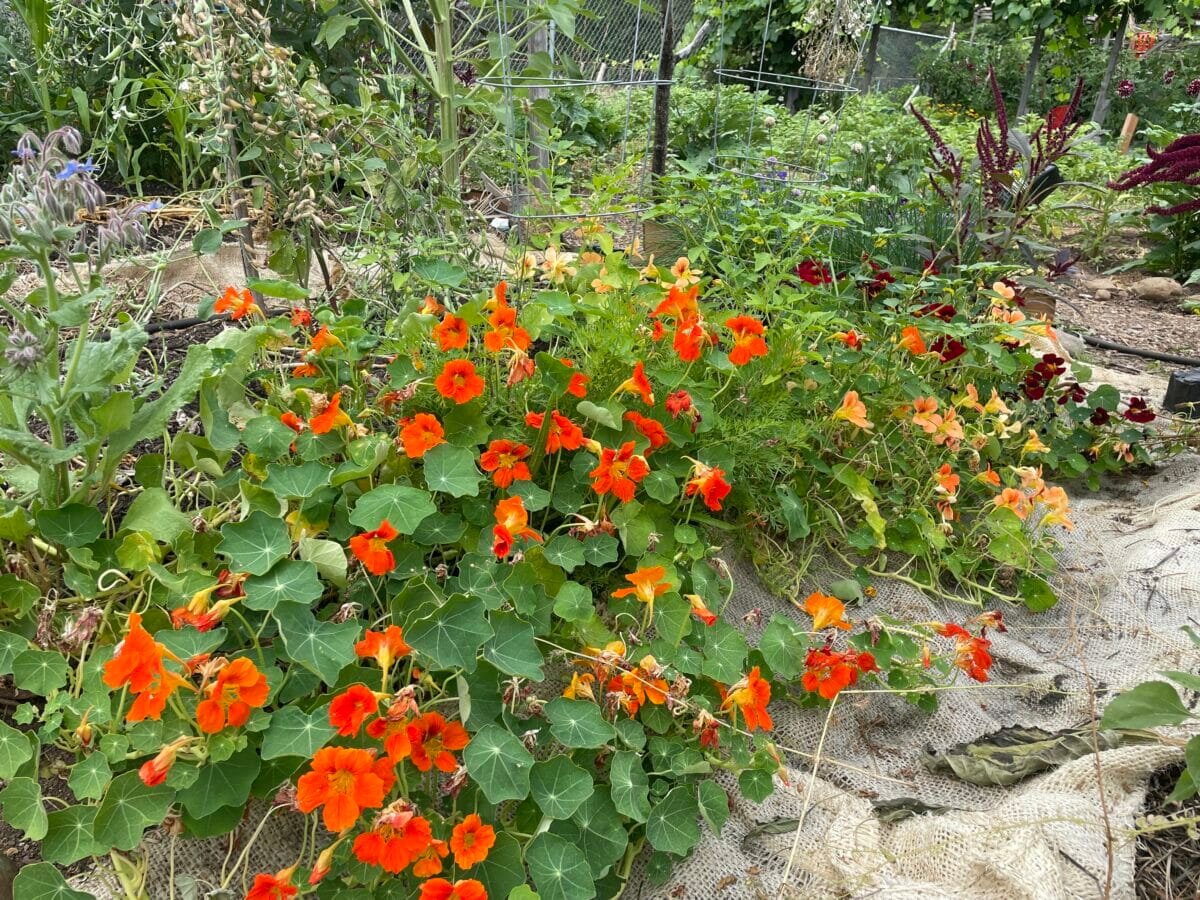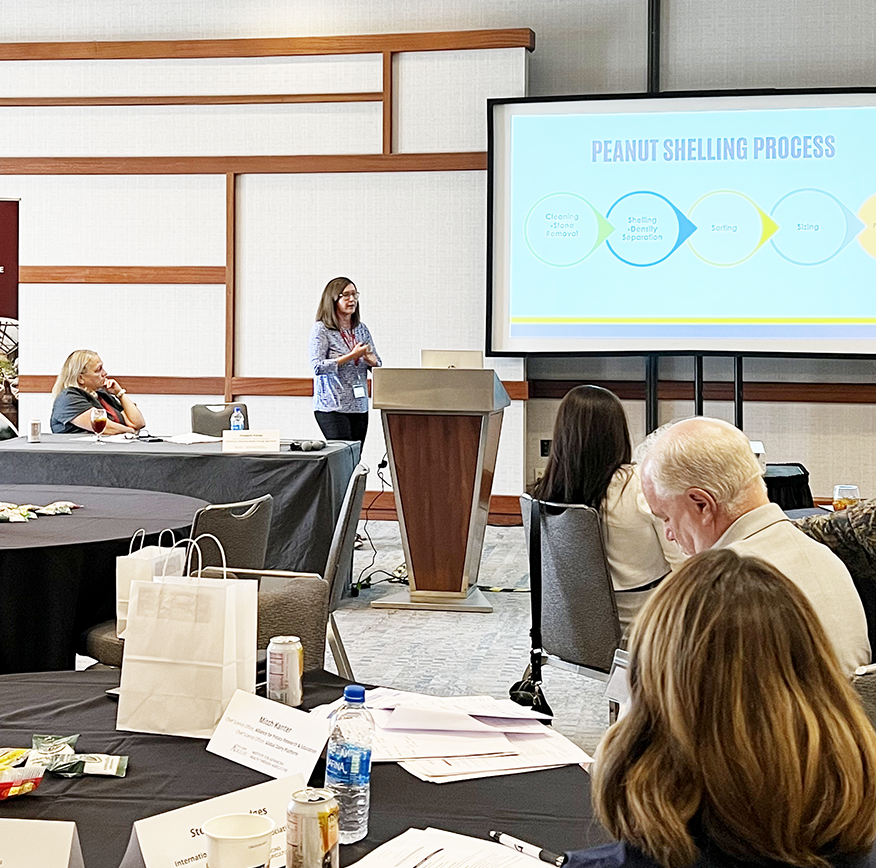In front of Powell Butte Elementary School, on the east side of Portland, Oregon, is a transformed patch of concrete. In a plot no bigger than 20 feet long, there are rosemary bushes planted next to grapes that hang off a curved trellis. A patch with the three sisters (corn, squash and beans) butts up next to a colorful sprouting of nasturtiums. In the center sits a well-worn picnic table, its grooves long since sanded away and flattened out by hundreds of little hands.
This is the learning garden for students in kindergarten through sixth grade. Every week, the students get a chance to come out to the garden during after-school programs and, sometimes, even for classroom instruction. Behind the school, in the sizable community garden, a larger production patch grows. That’s for students at nearby David Douglas High School. And all throughout Portland, these school gardens are popping up like wildflowers across the landscape, bringing bursts of color to the city and the students who tend to them.
This is the goal of Growing Gardens, a Portland-based nonprofit dedicated to promoting garden-based learning opportunities and celebrating local food. Each year, the organization reaches close to 3,000 students through classroom lessons and the after-school Garden Club. Last year, the Powell Butte team grew almost 500 pounds of food, everything from potatoes and cucumbers to varieties of chiles, sorrel, collard greens and huauzontle, a robust herb that’s native to Mexico.
It’s a lot to take care of, and the Growing Gardens team members try to be thoughtful about how they program the lessons. “The curriculum really builds on itself each year,” says Anna Garwood, the organization’s Youth Grow program co-director, who highlights how important experiential learning is as a tool. “There are students that maybe don’t shine in the classroom, but when they’re out in the garden, they are really kinetic learners. Describing what volume is on a two-dimensional worksheet is different than saying ‘OK, we’re gonna build a garden bed. How much soil are we going to need?”
By building on these skills year after year, students grow with the gardens and find tasks and opportunities waiting for them depending on their age and skill level. Elementary school students work with Angeles Martinez Silverio, a Youth Grow educator, for after-school gardening and cooking. First, Silverio helps the kids decide what to grow and explains what will thrive in their particular climate. “Sometimes, [the kids will] say mangoes or oranges, and so we have to explain how some of those hot-climate plants aren’t going to grow in Oregon, but then I can suggest strawberries or blueberries or blackberries.” Silverio also adds flowers and other plants into the garden to use in art projects, as well as to help kids understand plant life cycles.
“When the pollinators come [for the flowers], they help the fruits and veggies grow better. In the school curriculum, there’s a whole unit on pollinators and solid fertility and ecosystems,” Silverio explains. “We want the students to see the insects and bees and worms and not think they are scary, but that they’re our friends.”

The spirit of those lessons carries through to the high school level. At David Douglas High School, Corey Pierson, a food systems educator, also works with students to determine what they want to grow, but the process is more collaborative for older kids. Pierson puts out a survey at the beginning of the year, gaining feedback from the students, and also partnering with school groups like the Black Student Union or the Indigenous Student Union to incorporate culturally significant crops. Then, they cook with their own crops, making pesto and salsas, and even more ambitious recipes such as mochi doughnuts.
For the older students, though, Pierson says there’s more cultural and environmental awareness. Many of the students who come to his garden clubs are particularly interested in environmental justice work. “Kids are nervous about the state of the world, and they want to feel like they can do something. So putting that power in their hands is important,” Pierson says. In that way, the garden also becomes a safe space for the teens, a place where they are empowered. “There’s a lot of value to being able to be yourself in a space that is not judged by your parents or whoever’s at home. It’s not judged by your friends or your peers. You’re just with other people who enjoy the same things you do.”
And for students in this particular district, that can be especially important. East Portland is a diverse area, with Hispanic, Asian and Russian students, among others. Silverio believes that being able to grow traditional Mexican foods helps connect those young students with their heritage. “I’m from Mexico, I come from a Hispanic culture, and even my own children didn’t grow up in Mexico,” Silverio explains. “Part of why I teach the Three Sisters lessons…is to introduce these things. Why do we celebrate Day of the Dead? Why do we do certain dances? Why do we plant corn?”
For older students, Pierson spends time with students of color, working to nourish a relationship with working outdoors, something that can be difficult with generational trauma. “Every minority group in the United States has had their labor exploited to work on the land in some way,” says Pierson. That can lead to a loss of connection with the land, which Pierson is trying to curb “because that connection is going to be needed as we go through these tumultuous climate change years.”
Growing Gardens pays particular attention to these cultural needs. It brings in guest speakers from farmworkers unions or community gardens and tries to highlight leaders in BIPOC food systems. According to Garwood, the organization is looking to expand the program even further, but it wants to do it strategically. “We want to have longer-term relationships with each of the schools, because we see how the program gets better as the relationships deepen,” says Garwood.

The nonprofit has already broadened out to serve younger kids, building their first garden at a Headstart Program and reaching families with preschool-aged children. Over the pandemic, Growing Gardens brought its school garden co-ordinator training certification online, so that more people can access the training and get involved. It has also run the program as a national course, training people across the country.
It’s easy to see why Growing Gardens wants to expand. Silverio, Pierson and Garwood all light up when speaking about the changes they’ve witnessed in students exposed to the gardening program. For some kids, that spark might happen when trying a new type of food they’ve never eaten before. Perhaps they get a glimpse of a career they might want to pursue after high school. And for others, it might be something as simple as getting their hands dirty.
Above all, watching the students’ growth of confidence and sense of self is an incredible thing to behold. “Some students are nervous to even come into the garden, because they are afraid of spiders or worms,” says Silverio, “but once they come in and observe what the [insects] are doing, they get more comfortable.”
!function(f,b,e,v,n,t,s)
{if(f.fbq)return;n=f.fbq=function(){n.callMethod?
n.callMethod.apply(n,arguments):n.queue.push(arguments)};
if(!f._fbq)f._fbq=n;n.push=n;n.loaded=!0;n.version=’2.0′;
n.queue=[];t=b.createElement(e);t.async=!0;
t.src=v;s=b.getElementsByTagName(e)[0];
s.parentNode.insertBefore(t,s)}(window, document,’script’,
‘https://connect.facebook.net/en_US/fbevents.js’);
fbq(‘init’, ‘264217957779476’);
fbq(‘track’, ‘PageView’);












